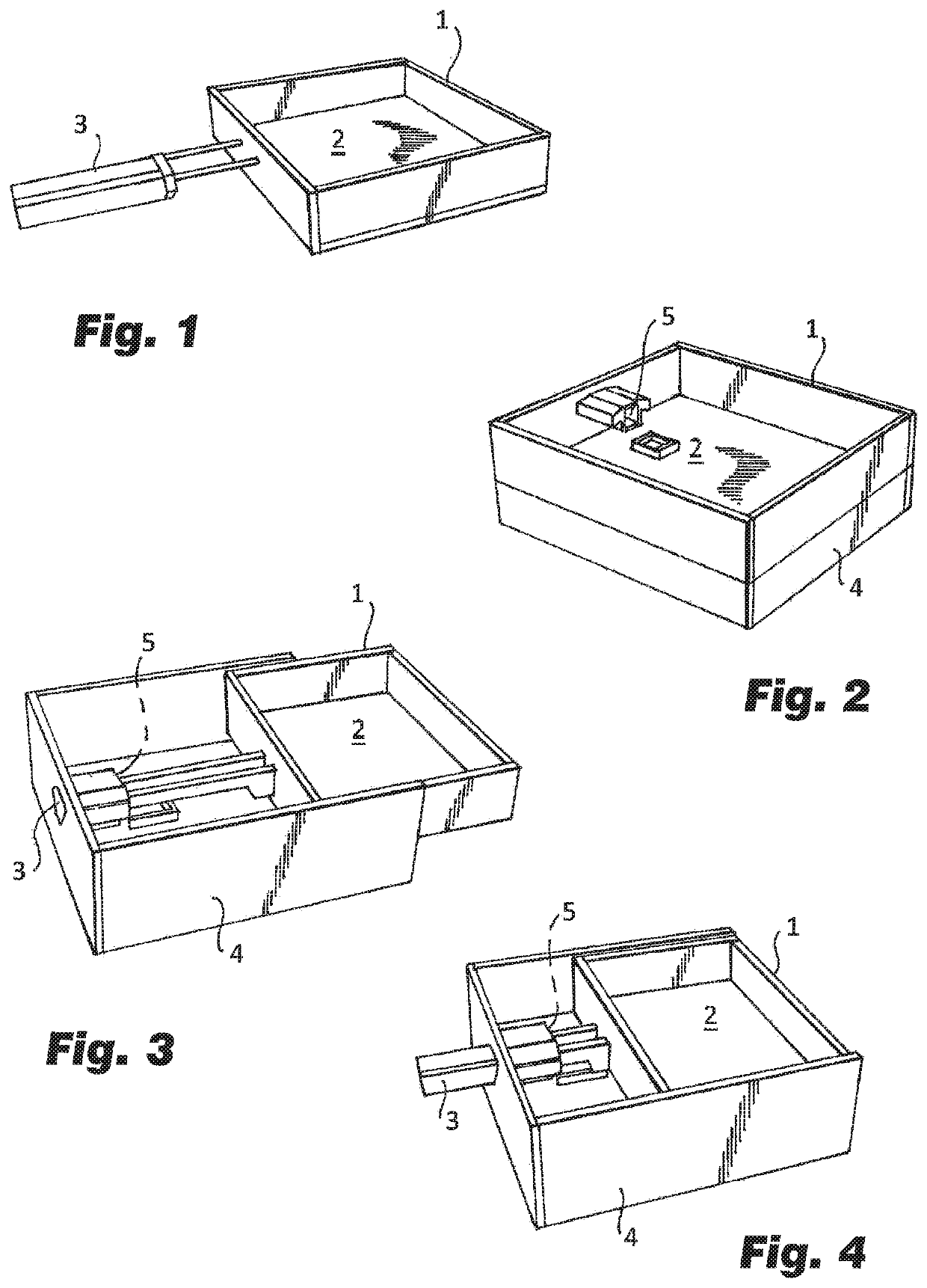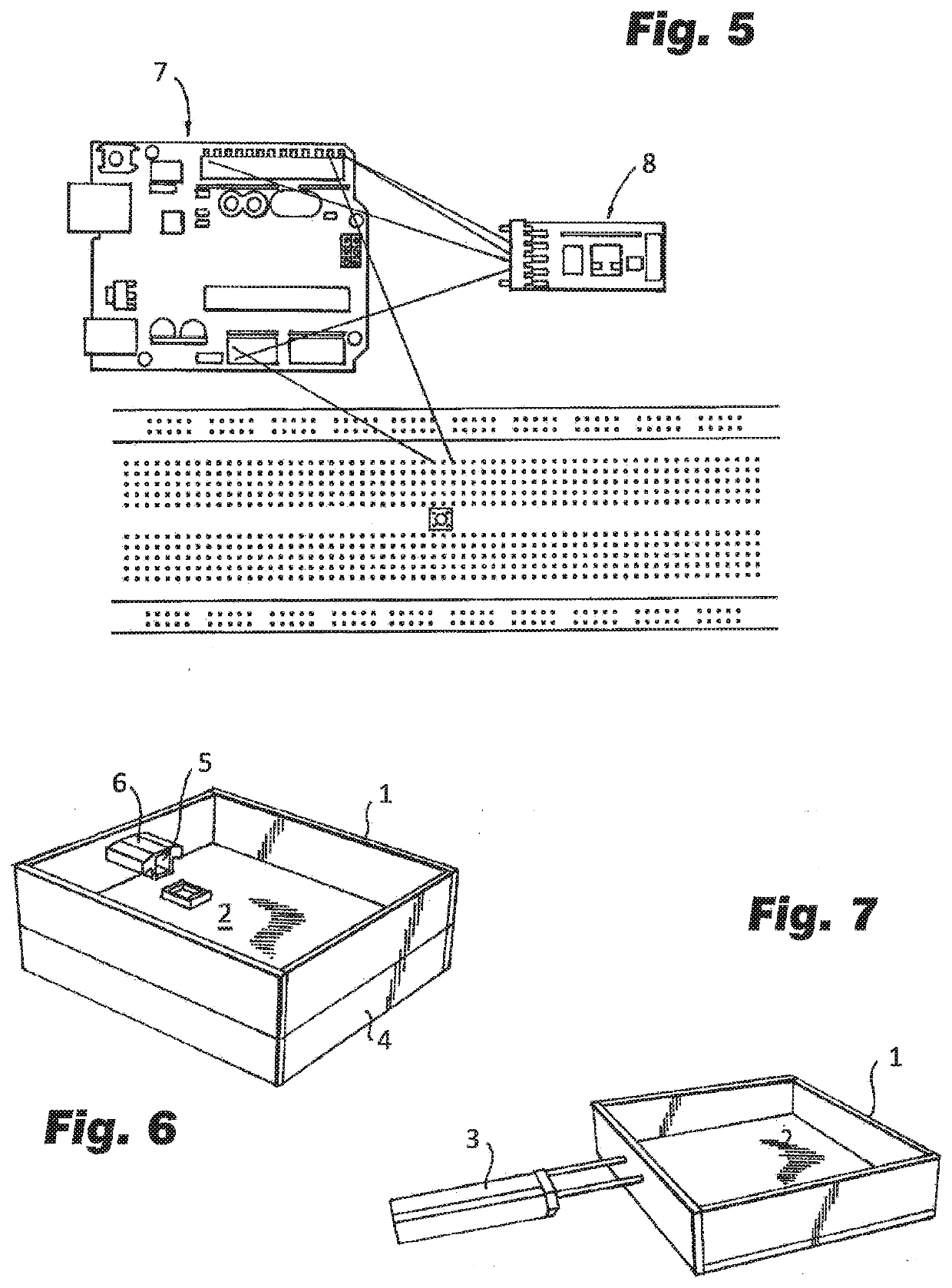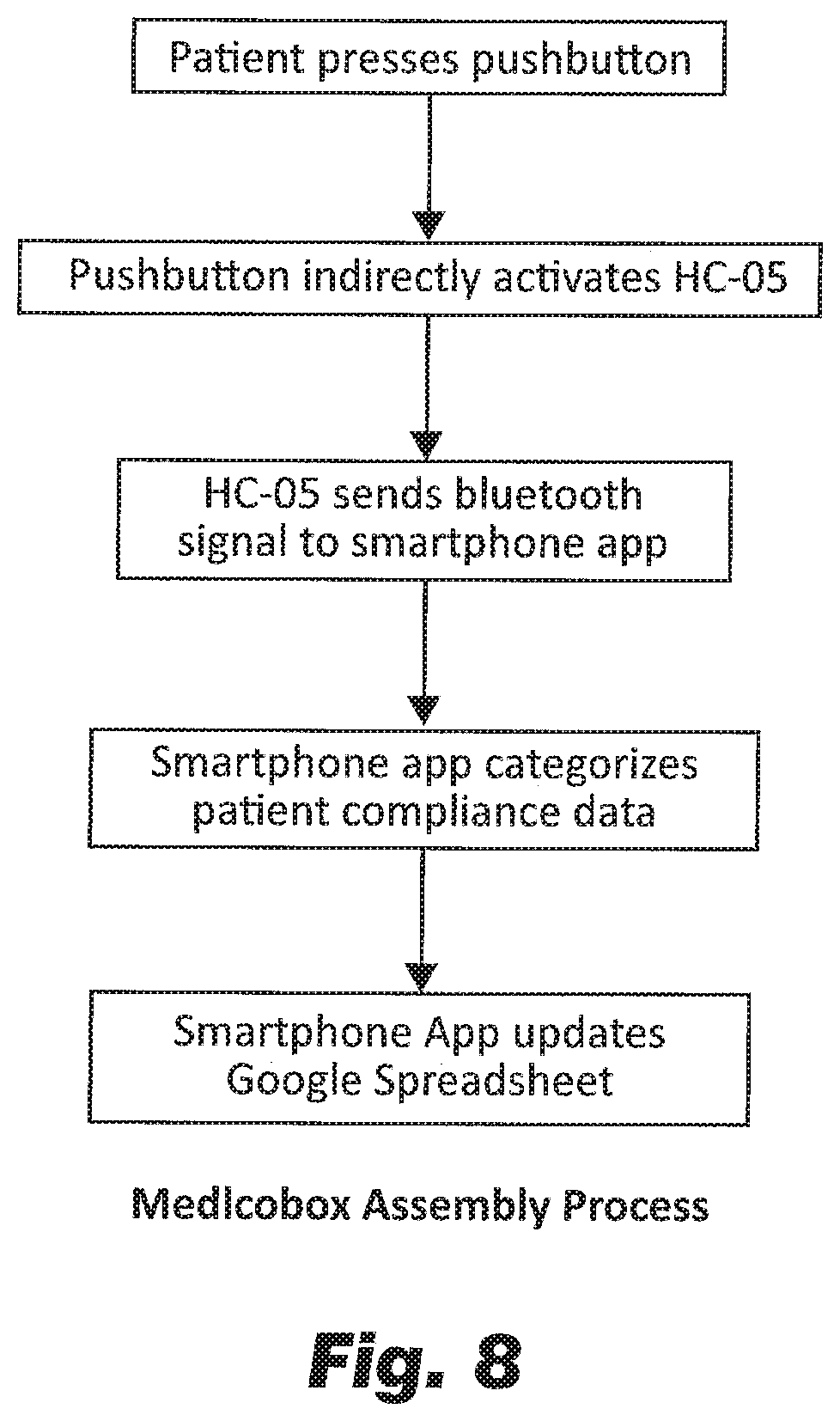Although such tremendous spending occurs, the United States straggles behind all other first world countries, implying that most of the spending is waste.
Out of the many causes behind such an enormous problem, it is noncompliance that is the most wasteful out of all.
There are many reasons and consequences behind medical noncompliance, which can include correlations between race, gender, age, in addition to experiencing unwanted side effects, financial issues, etc.
Its consequences are drastic, leading to avoidable hospitalization, false results in clinical studies, and decreased efficiency for doctors, pharmacists and other medical personnel.
Although there have been some solutions to such a problem, little is done overall to solve it.
Even the most effective technologies in the market, pill bottles, are either too expensive, or do not solve the initial problem of noncompliance.
These rankings are due to a significant amount of waste, which arises from multiple sources, the first of which is the failure of proper care delivery, in which execution of proper care processes, or methods are not able to be delivered properly to the patient.
Secondly is overtreatment, in which unnecessary and excessive amounts of medication and / or other treatments are administered to the patient.
This not only wastes money, but also does not enhance or improve the patient's health
regimen.
Finally, there may be fraud and abuse, which involves scams, and corrupt medical practices.
In contrast, $750 billion dollars are simply wasted every year by the health
system.
In addition, investment is not contributed to either research or development, resulting in the significant waste today.
The research and development portion of the 3 trillion healthcare budget is simply 1 billion dollars, too meager for any major problem to be resolved.
However, the most wasteful but overviewed practice today is noncompliance.
Because the number of patients with chronic diseases has also increased on average by at least 77% in older adults, one can predict a rise of noncompliance in the near future of healthcare; which would also create an expense of over at least 10 billion dollars.
However, both methods have subtle differences between one another.
However, this is rarely used as it is very costly, and inefficient for medical personnel.
Already one can view flaws in the method used to measure adherence in healthcare.
However indirect measures taken by doctors and nurses, which are used in the twenty-first century, not only are they accurate, but they are not a viable resource for the healthcare industry to use, as there are multiple leeways that can be utilized by patients to provide incorrect, falsified, or misleading evidence of adherence.
When using the methods of measuring compliance such as the MPR or PDC method, one can see that the current adherence measurement methods do not apply or are not helpful in this case study.
Healthcare personnel such as physicians can potentially be misled when encountering such a
scenario.
The problem of non-adherence has led to drastic consequences affecting the patient, the doctor, employer,
pharmacist, etc.
Avoidable hospitalization due to noncompliance not only decreases the number of patients who can be cured in a certain period of time, but it also causes unnecessary financial pressures on patients, employers and employees.
Because of continual visits to the hospital and the average income being approximately $50,000 dollars in 2014, patients can no longer afford the high cost of hospitalizations.
Hepatitis C pills cost $1000 dollars per pill without insurance, meaning that a four-month period of medication can cost approximately $84,000 dollars, too high for patients to pay for them.
Since more patients cannot enter the hospital for care, hospital employers can no longer receive the profits and income that they had before.
In addition, studies have shown that higher rates of noncompliance of the patient lead to a higher risk of developing a serious
disease or side-effect.
Similar results have been displayed in diabetes, in which higher rate of noncompliance can potentially lead to increased levels of glycosylated
hemoglobin,
blood pressure, and
cholesterol levels.
This leads to misleading evidence, which interferes with accurate
hypothesis testing and conclusions, with results that may be detrimental to the
population.
At the same time, deceptive and artifactual evidence can be completely unrelated to the
hypothesis being tested—which leads to a waste of money, and a waste of time, as shown in Table 8.
In the following case study, low, or no adherence can cause problems in clinical trials:
Such a problem can occur with other individuals, which leads to a higher inaccuracy in
data selection.
Powering the data of an experiment using noncompliance is definitely detrimental.
Although such an experiment was deemed an achievement, results did not conclude as expected.
With an incredible amount of money put on such a project, pressures put on scientists, and experimenters, they can be forced to make conclusions, even though such conclusions can easily be rejected.
In addition, trials that may be on the path to producing drugs that may have the potential to eradicate the world of potent diseases may be biased, falsified, or simply inaccurate of the
population; leading to potential damage to the
entire population, or creating extraneous complications.
Because patients do not usually take medication
as directed, incorrect habits form, which threaten the patient in addition to the general
population.
Because of non-adherence, patients who now contain the “secondary
drug resistance” are able to occasionally transmit
disease from one patient to another, which creates not only sets a
panic to look for a stronger
drug to kill the
disease, but infects medical personnel and patients as well, creating more sick patients and therefore, increasing hospitalization.
In addition, children are more vulnerable due to their compromised immunities.
With the advent of superbugs, it is especially important to lower noncompliance rates of newly developed drugs, as if resistance of these drugs can lead to a loss of many lives and endanger the general population as a whole.
The most important and common consequence of medical non adherence is that healthcare professionals lack knowledge or data regarding the adherence of the patient.
However, not only has it been shown that the majority of the population does not take their medication
as directed, but doctors cannot receive evidence denoting the fact that the patient is taking their medication; simple word of mouth is not enough to determine whether the patient is compliant.
This negatively affects doctors, who do not know why the patient is not healing.
First of all, patients do not have much of a context as to how the medication will change their daily lifestyle.
Clinical records simply show adverse life-threatening reactions, but never display the change in the
quality of life for the patient.
Because of the faulty appraisal of the medication, negative side-effects become not only an unpleasant surprise to the patient, but also
taking medication becomes a burden that the patient is now unwilling to take.
For example, if a doctor prescribes a new
drug to a patient with a certain illness, he / she will tell the patient that the medication will “cure the illness”, and help the patient in that sense, but will not tell the patient of a possible unpleasant side-effect such as getting
headaches, which leads the patient to think negatively of the drug itself.
Secondly, benefits of a certain drug are not visible to the patient.
In the previous example, the patient may not know that his / her illness is being cured, due to a lack of phenotypic difference by the drug.
This is fairly common with drugs which do not have a cure guaranteed for the patient, which would lead to a questioning of the effectiveness of the drug, especially if it produces side effects without a visible benefit.
In addition, other unrelated issues that may cause grief may cause non-adherence.
However, after her husband passed away from a recent heart
attack, she fell into a deep state of grief, which led her to temporarily stop
taking medication due to her grief.
However, the most important factor causing intentional non-adherence is the fact that medication is much too expensive to the average patient, and the cost of pills are increasing at a very drastic rate.
With the average income per person being approximately $51,000, such medication is definitely unaffordable by the general public.
This induces medical non-adherence because it changes one's attitude towards the medication, causing him / her to behave adversely.
This halts or delays the healing process, leading to ineffective and inefficient care.
In addition, patients also simply discontinue the treatment.
Out of those who do, 50% discontinue using the medication after six months, which creates major losses in the pharmaceutical industries (Table 12).
Unintentional non-adherence is a more significant and widespread problem in comparison to intentional adherence.
Unintentional non-adherence is the result of the patient is willing to adhere to his / her prescriptions but is unable to do so due to obstacles that cannot be controlled by the patient.
This includes not being able to recall whether medication has been taken, or not being able to find the medication, etc.
Such a problem is very detrimental to pharmaceutical industries as well as other medical industries.
Finally, elderly noncompliance has caused a waste of billions of dollars in the healthcare industry.
However, disputes have occurred based on whether age is a true contributor to noncompliance.
On the other hand, studies also show that males are related to
poor adherence.
Education also helps diminish the problem of health illiteracy, a significant problem in healthcare today.
Defined as the ability for a patient to obtain, access, and understand
health information and services to make appropriate health choices, health literacy has become a significant problem for patients and healthcare providers over the recent years.
In addition, only 33.3% are able to perform menial tasks properly, such as following directions on the prescription.
Health illiteracy then becomes a concern because the patient may not be able to determine when he / she has to take their medication.
In addition, poison warnings or other hazards will not be read or understood, leading to hospitalization or a more extreme event—death.
This also leads to shame of a patient, in which the patient is too embarrassed or ashamed to ask for help.
However, in this field itself, numerous patients struggle to comprehend simple numerical data.
Studies show that poor communication with one's healthcare provider is linked to patient noncompliance.
It is shown that patients with multiple physicians and healthcare providers prescribing multiple medications tend to lose confidence in their health
regimen.
As shown in the Table 14 below, patients do not reach the ideal medical practices region, creating a gap between the patient and the doctor.
As established above, unintentional noncompliance is most prevalent because patients tend to forget to take their medication.
Reminder systems are effective because they allow the patient to not only take the medication that is required for their health regimen, but also allow the patient to get habituated in
taking medication regularly: These reminder systems are only effective, however, if patient contact is at its highest.
However, the technology being implemented in the medical industry today is outdated, and has many flaws, making it less applicable in the 21st century.
However, such technology is very inefficient and not beneficial, In a study involving 398 patients, using automated reminders along with monitoring devices did not show any significant benefit to medical adherence.
First, any benefits in adherence is only intended towards the patient, whereas doctors will not know the health regimen for the patient in terms of adherence.
At the same time, pharmacists do not know for sure how many pills the patient took in a select time period.
This leads to the second flaw: the method is not flawless.
Instead, it is far from determining actual adherence.
When these two effortless procedures are taken, the
database is simply useless.
Finally, automated reminders are simply not effective in reminding patients to take medication.
Reminders can be simply ignored by the patient, and also, the patient can simply turn off reminders from pharmacists (as daily automated reminders can be irritating to some).
Therefore, databased and automated reminders and adherence predictions are not effective due to their impracticalities.
This makes a major difference because handwritten notes are easily misplaced by patients.
In addition, handwritten notes do not provide any
verification that the patient came to pick up his or her medication.
This behavior usually goes unseen because pharmacists are not aware of the fact that the doctor has prescribed medication to a specific patient.
However, it does not solve the entire problem.
Secondly, errors occur between
pharmacist and doctor communication (due to
software problems) which would lead to decreased efficiency.
Approximately 1 out of every 10 prescriptions sent result in
pharmacist intervention because of a lack of specificity or other complications.
More importantly, however, is the cost of such technology.
Per prescriber, the cost is approximately 2,500 dollars, too expensive for the average physician.
Although
electronic prescriptions are helpful to some degree in decreasing noncompliance, its expenses are simply too high for a practical solution.
Although such a
scenario is ideal, it is not as practical as envisioned.
Any roughness in the environment can now ruin the weight sensor accuracy.
In addition, in the case of placing the pill
bottle on its side, the reading of the weight will not be accurate at the slightest, and also damage the weight sensor.
Finally, the device is relatively in a higher amount of weight, creating an impracticality in the field of portable devices.
Although such features seem beneficial, it does not fit the criteria established.
The dispenser is incredibly expensive, as it costs at least 800 dollars.
In the average population, patients are not able to afford such a device.
In addition, although the patient's compliance is sent to the doctor, it cannot be organized in a way so it is easier for the doctor to be able to access them.
In other words, long term compliance tracking is not achieved by the device in discussion.
As seen in these top-market pill bottles, the devices are not efficient or cost effective.
In addition, most of the devices that are available in the market tend to be too expensive for the common patient.
 Login to View More
Login to View More  Login to View More
Login to View More 


